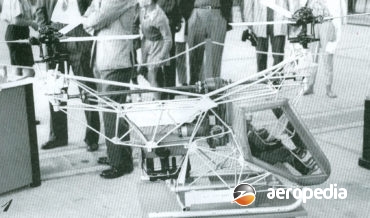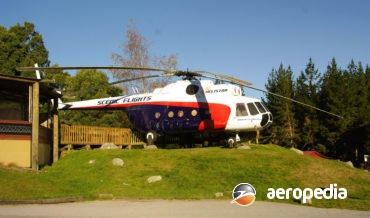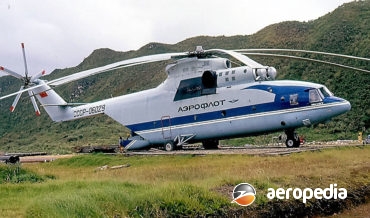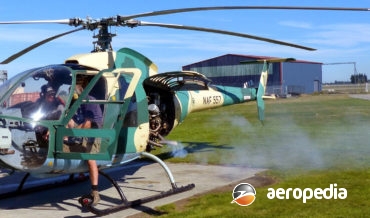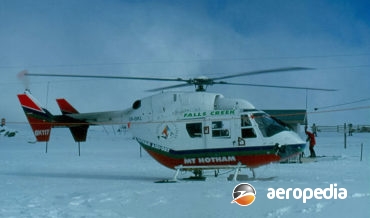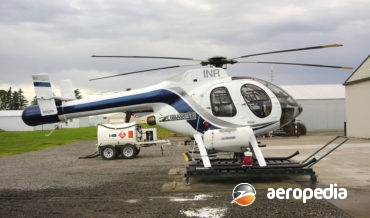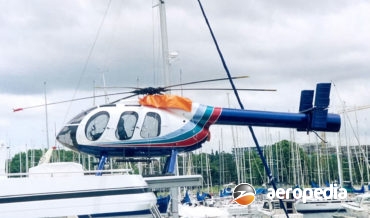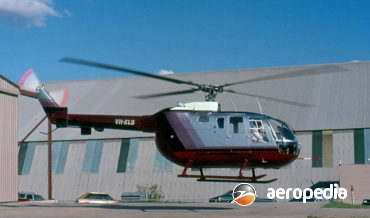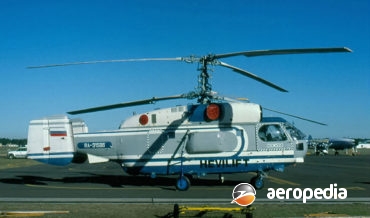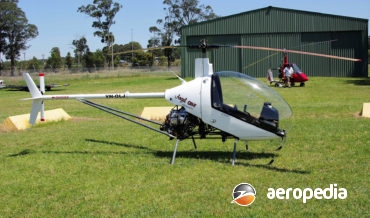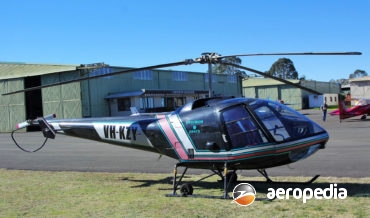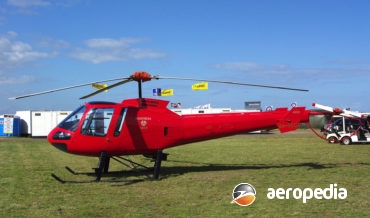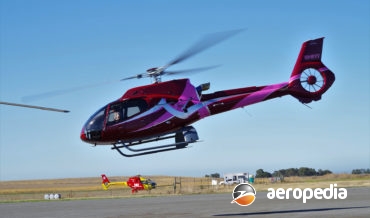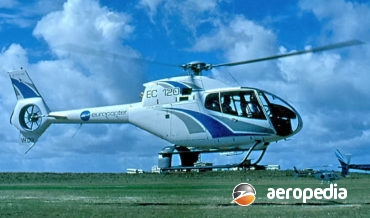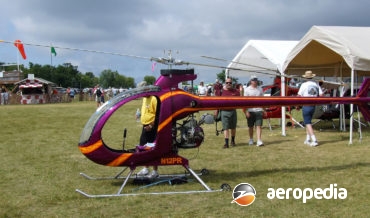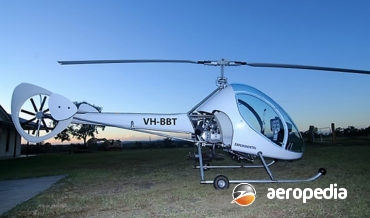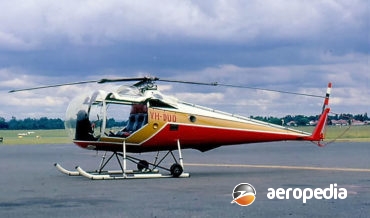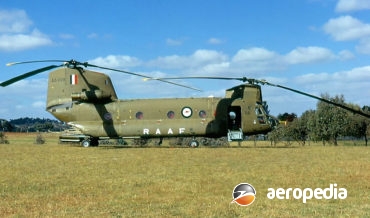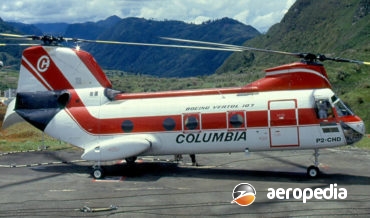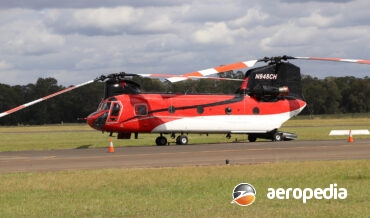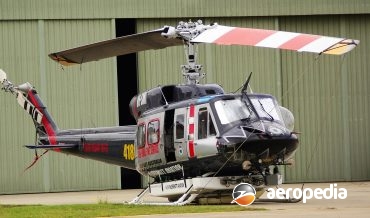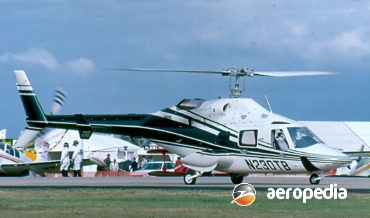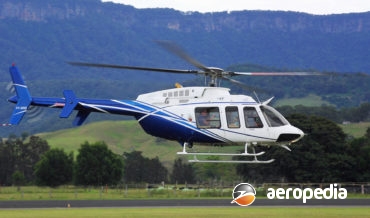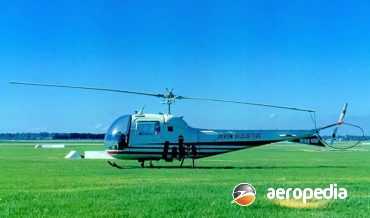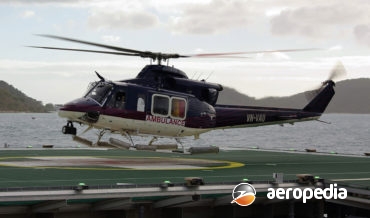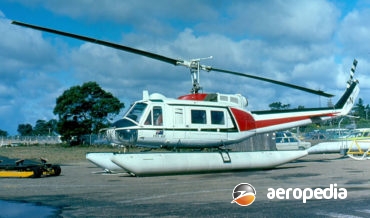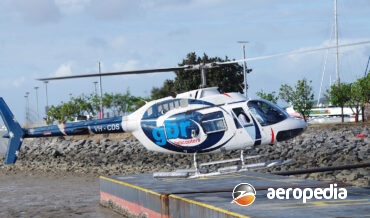All Contents
Contents
The XM-2000 was designed by Grevor Chilton Bing Molyneux, a Melbourne aeronautical engineer, in about 1953 as a two-seat twin-rotor helicopter to prove the subsequent commercial and / or military helicopter known as the XM-1000 which was to be powered by a (550-hp) Pratt and Whitney Wasp engine, was to
David C. Eyre
- May 8, 2019
The Mi-8/14/17 series of helicopters has been one of the most important families of helicopters operated by countries coming under Soviet influence in the days of the cold war, with some 9,000 examples of the Mi-8 alone being built.
David C. Eyre
- May 8, 2019
The Mi-26 was designed to replace the Mi-6 and in fact provide between 50% and 100% greater capability, with a hold similar in size to that of a C-130 Hercules.
David C. Eyre
- May 8, 2019
The Mil Mi-34 utility helicopter, with the NATO reporting name Hermit, is a light utility helicopter produced by the Mil Helicopter facility in Moscow in either two or four seat configurations.
David C. Eyre
- May 8, 2019
The BK-117 helicopter was the result of a plan by Messerschmitt-Bolkow-Blohm and Kawasaki to jointly develop an eight to twelve seat multi-purpose helicopter.
David C. Eyre
- May 8, 2019
In January 1988 McDonnell Douglas Helicopter Company announced its intention to develop a version of the MD-500 series using its NOTAR (No tail-rotor) anti-torque system, with the first aircraft to fly in May 1989.
David C. Eyre
- May 8, 2019
A derivative of the MD-520N, the MD-600N prototype was unveiled at the Helicopter Expo in Las Vegas in January 1995, the concept having been announced in November 1994
David C. Eyre
- May 8, 2019
The BO-105 was one of the first light, twin-engine turbine helicopters built, using an advanced rotor developed with the assistance of Aerospatiale, with fibreglass blades attached to a flexible hub of forged titanium.
David C. Eyre
- May 8, 2019
The K-Max was designed and built by Kaman Aerospace as an affordable, medium-lift helicopter able to perform vertical lifts and suited for emergency response missions ranging from fire-fighting and disaster relief to search and rescue, power line work, and timber harvesting. A variant developed was the Firemax, a heli-tanker model
David C. Eyre
- May 8, 2019
The Seasprite has had a remarkably long life in service with the US Navy, the contract for its design being issued in 1957. Since then it has been built in relatively small numbers, some 250 or so machines initially, but those built have been the subject of a considerable number
David C. Eyre
- May 8, 2019
The Ka-32 is the designation for the civil series of helicopters produced for the Soviet military forces under the designation Ka-25/27 and given the code names “Hormone” and “Helix”. Basically designed for anti-submarine warfare, the prototype appeared in 1981. Nikolai Ilytich Kamov was one of the lesser known Soviet designers
David C. Eyre
- May 8, 2019
The Kawasaki KV-107 was a licence-built version of the Boeing Vertol Model 107 which had been supplied to the US and other military forces as the H-46 Sea Knight and which had been produced in a variety of models to meet a number of operational needs. In 1965 Kawasaki acquired
David C. Eyre
- May 8, 2019
In the 1950s the US Navy was seeking a cheap, simple single-seat helicopter for the reconnaissance and assault role, and the Gyrodyne Company of America in St James on Long Island, New York, produced a series of helicopters known as the XRON Rotorcycle between 1954 and 1956.
David C. Eyre
- May 8, 2019
The Cabri is a small, two-seat light helicopter, the production prototype of which (F-WYHG) was flown in March 2005, certification in Europe being obtained in December 2007.
David C. Eyre
- May 8, 2019
The FH-1100 was the first American, light, turbine powered helicopter to be offered on the commercial market
David C. Eyre
- May 8, 2019
The CH-7 Angel was designed by Augusto Cicare in Argentina as a single-seat light cheap sporting helicopter powered by a 600-cc two-cycle two-cylinder dual-ignition liquid cooled engine. Aimed at a market for transport, tourism and agricultural use, the structure is of steel trestle weld and aluminium tubes bolted together,
David C. Eyre
- May 8, 2019
The Enstrom Corporation of Menominee County Airport, Michigan, was formed in 1959 by Rudy Enstrom to undertake the development and production of a small helicopter for private and commercial operation.
David C. Eyre
- May 8, 2019
The Model 480 was developed to increase mission flexibility and to provide a more affordable light turbine-powered helicopter to place on the market which for years was dominated by the Bell 206 and the Hughes 500.
David C. Eyre
- May 8, 2019
In early 2001 at Heli-Expo Eurocopter announced a new helicopter had been added to its range, this being the EC-130 series based on the AS 350B3 but with a larger cabin and baggage area, and including the doors and windshield from the EC 120 Colibri series.
David C. Eyre
- May 8, 2019
One of a series of helicopters produced by Eurocopter, the Franco/German consortium. The prototype of the EC-120 Colibri (F-WWPA), initially designated the P120L, flew for the first time on 9 June 1995, the second prototype (F-WWPD) flying on 17 July 1996.
David C. Eyre
- May 8, 2019
The Dragon Fly was designed in 1985 in Italy by two archeologists, Angelo and Alfredo Castiglioni, as a two-seat light helicopter to meet a requirement they had for a survey platform or research work.
David C. Eyre
- May 8, 2019
Dynali was formed in the early 1980s, the company being formed by Jacques Tonet in Belgium as Dynali, later becoming Dynali Helicopters.
David C. Eyre
- May 8, 2019
One of a new range of helicopters being produced for the light training market, the D2 is produced by Delta Development Co of Tonah in Queensland and is a diesel-engined powered light helicopter with a skid landing gear.
David C. Eyre
- May 8, 2019
The Brantly Helicopter Corporation was formed atPhiladelphia, Pennsylvania by Mr N O Brantly during World War II to develop his design of a co-axial rotor helicopter known as the B-1.
David C. Eyre
- May 8, 2019
The first prototype of the Bristol 171 Sycamore, a Mk 1 (serial VL958), was flown on 27 July 1947, with the second, a Mk 2 (VL963) being flown in February 1948.
David C. Eyre
- May 8, 2019
Designed to compete in a US Army competition for an aircraft to vertically lift a payload of 1,814 kg (4,000 lb) internally, or 7,258 kg (16,000 lb) externally, the Model 114 (designated YHC-1B by the US Army) made its first flight on 21 September 1961.
David C. Eyre
- May 8, 2019
Vertol Aircraft Corporation was formed in March 1956 and immediately commenced the design of a twin-turbine tandem-rotor transport helicopter for civil and military use.
David C. Eyre
- May 8, 2019
In 1956 Boeing Vertol commenced the development of an all-weather medium transport helicopter for the US Army, this eventually entering service as the CH-47.
David C. Eyre
- May 8, 2019
The Bell Model 212, known as the Twin Two-twelve, was developed from, and based on, the Model 205 Iroquois.
David C. Eyre
- May 8, 2019
The Bell 214 series was announced by Hell Helicopter in 1970 as a development of the Bell 205 and basically involved the installation of a Lycoming T53-L-702 engine providing 1,417 kw (1,900 shp) engine and a prototype 214A (c/n 27004) became a demonstrator which was evaluated by the Imperial Iranian
David C. Eyre
- May 8, 2019
The Bell Model 214ST (ST for super transport) was a development of the Model 214B (known as the Biglifter) and replaced that model on the production line in early 1981, deliveries of 214STs to customers beginning in early 1982.
David C. Eyre
- May 8, 2019
In 1974 the Bell Helicopter Company announced its intention to develop the Model 222, and the first of five prototypes was flown for the first time on 13 August 1976. This model received FAA certification in pre-production configuration on 16 August 1979.
David C. Eyre
- May 8, 2019
The Bell 230 is a utility helicopter designed with simplicity, low cost, low maintenance and reliability in mind, and was introduced to the Bell range of helicopters in 1991 and is a development of the Bell 222B series.
David C. Eyre
- May 8, 2019
The Model 407 is a significantly improved development of the Bell 206L-4 LongRanger, with better range, payload, cruising speed and hovering ceiling.
David C. Eyre
- May 8, 2019
The Model 47J series of helicopters was announced in 1954, it being decided that it would be produced alongside the 47G series.
David C. Eyre
- May 8, 2019
The prototype of the Model 412 series was flown for the first time in August 1979, being an updated and refined development of the Model 212, having a new-design four-blade rotor in lieu of the two-blade unit, a shorter rotor mast assembly, and a more powerful engine and transmission system
David C. Eyre
- May 8, 2019
Civil examples of the Iroquois series of medium lift helicopters have been operated around the World over the years, a number being operated in South-East Asia by Air America during the Vietnam War.
David C. Eyre
- May 8, 2019
The Bell 427 was Bells first entry into the light twin-engined turbine utility helicopter market, being an eight seat machine powered by two Pratt & Whitney Canada turboshafts.
David C. Eyre
- May 8, 2019
The Bell 206 series of light helicopters was one of the most successful machines to be built in its intended role, and some 7,700 examples have been built for civil and military operators in a variety of models. In addition, licence production was carried out in Australia by the Commonwealth
David C. Eyre
- May 8, 2019
The Bell 429 is a light twin-engine helicopter produced by Bell Helicopter at Fort Worth, Texas, in the intermediate class cabin category with a flat floor to provide, in the air medical mission role, easy passenger access.
David C. Eyre
- May 8, 2019
Recent Comments
Archives
Categories
- No categories
Categories
- No categories
Latest Posts
Newsletter

